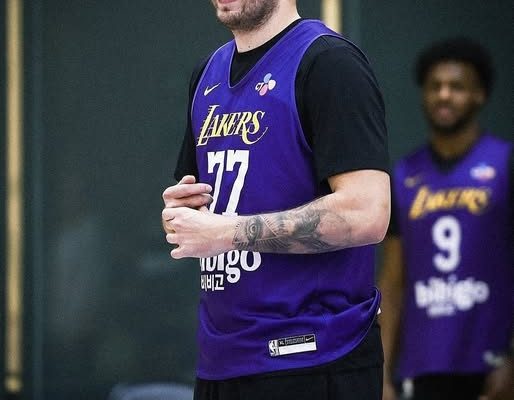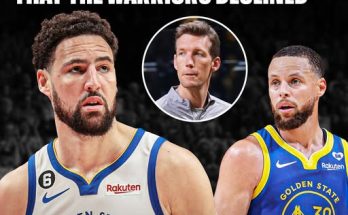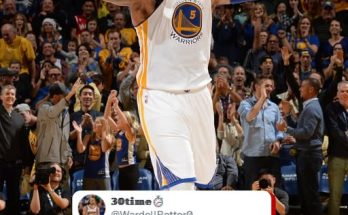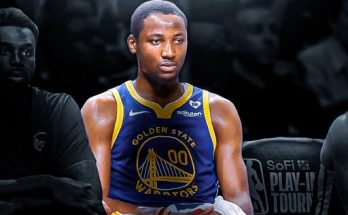Luka Dončić’s return to the United States has reignited a flurry of speculation surrounding his NBA future, particularly his rumored ties to the Los Angeles Lakers. After a whirlwind international summer, which included his usual dominance for Slovenia and brief moments of media mystery, Dončić has officially landed back on U.S. soil. But for those expecting this arrival to trigger an immediate extension with the Lakers—or even meaningful talks—there’s a sobering dose of reality: no extension is imminent, no deal is brewing, and for now, Dončić appears content to keep all options open as the 2025-2026 NBA season looms.
The excitement surrounding Luka’s potential association with the Lakers hasn’t come out of nowhere. Over the past few years, various reports and insider whispers have hinted at mutual admiration between Dončić and the Lakers’ top brass. Add in the persistent presence of LeBron James, the franchise’s history of attracting global superstars, and recent signs that the Mavericks may be nearing a strategic crossroads, and the dots start to connect—if not fully form a picture. Yet, the reality remains that Dončić is still under contract with Dallas for several more seasons, and the idea of a move to Los Angeles, let alone an extension, is much more about hypotheticals and timing than any impending transaction.
Sources close to both Dončić’s camp and the Lakers’ front office emphasize that, while there’s certainly admiration on both sides, there is no active pursuit at this time. That doesn’t mean conversations haven’t been floated. Behind closed doors, team executives across the league are always exploring possibilities, preparing for scenarios where a player of Dončić’s caliber could suddenly become available. The Lakers are no different. Rob Pelinka and his front office have long had Dončić on their radar. His style of play, marketability, and competitive spirit make him an ideal candidate to wear purple and gold in the post-LeBron era. But NBA contracts and superstar decisions are rarely straightforward, and Dončić’s loyalty to Dallas remains a significant factor.
For his part, Dončić has given no public indication that he’s discontent with the Mavericks organization. If anything, he has repeatedly voiced support for the front office’s moves to build around him, including the acquisition of Kyrie Irving and various rotational pieces aimed at giving Dallas a fighting chance in the brutal Western Conference. While the Mavericks have yet to make the deep playoff push that fans—and Dončić himself—clearly desire, the trajectory of the franchise is not so dire as to suggest an imminent exit. The Mavericks still believe that their best chance at contention is with Dončić as their centerpiece, and they are committed to making that a reality.
That said, it’s not unusual for players in Dončić’s situation to weigh all possibilities. He is entering the heart of his prime, already having cemented his place as one of the league’s top five players. He’s a nightly triple-double threat, a fourth-quarter closer, and one of the most marketable international stars in basketball history. The allure of L.A.—with its media reach, sponsorship potential, and competitive ambition—will always be a factor. But from a contractual standpoint, Dončić doesn’t have the leverage of free agency just yet. His current deal runs through the 2026-2027 season with a player option for the 2027-2028 campaign, making a near-term departure logistically complicated and financially costly.
The Lakers, meanwhile, are in a state of cautious optimism. They know that eventually, LeBron James will pass the torch, either by retiring or moving on, and the franchise will need a new superstar to take the reins. They’ve been linked to several young stars in recent months, from Donovan Mitchell to Trae Young to the more improbable long-shot scenarios involving Giannis Antetokounmpo or Jayson Tatum. But Dončić is unique in that his game, brand, and age all align with what the Lakers need most—an immediate successor who can lead a contender for the next decade. Still, timing remains everything, and for now, patience is the only play they have.
Dončić’s recent activities have only fueled the rumor mill. His brief stop in L.A. after returning to the U.S. was enough to spark conspiracy theories, Twitter threads, and fan-made graphics of him in a Lakers uniform. Social media detectives tracked his location, speculated on meetings, and debated what it all meant. But sources have consistently pushed back on the idea that anything concrete occurred during this window. Dončić was reportedly in town for personal and brand-related obligations—not basketball negotiations. Even so, the optics of Dončić in Los Angeles, so close to Lakers headquarters, are enough to keep fans and media engaged.
Complicating matters is the NBA’s new collective bargaining agreement, which places tighter restrictions on supermax trades and cap flexibility. The Lakers would need to navigate a minefield of salary cap implications, trade assets, and potential tampering scrutiny if they were to mount a legitimate pursuit of Dončić. While they have some promising young players like Austin Reaves, Dalton Knecht, and Jalen Hood-Schifino, along with draft capital, it’s unclear if that package would satisfy Dallas—especially considering how much they’ve already invested in building around their Slovenian star.
There’s also the LeBron factor to consider. James has been a vocal admirer of Dončić’s game, even once admitting that Dončić was one of the few players he would pay to watch. The two share a mutual respect, and their playing styles—especially their court vision and flair—draw natural comparisons. Some have speculated that LeBron’s continued presence in Los Angeles could be part of a long-term recruiting strategy, a way to keep the franchise appealing to younger stars looking for mentorship and championship opportunities. Whether this is part of any master plan is unclear, but the respect between the two is undeniable.
From a league-wide perspective, Luka Dončić’s future is one of the most closely monitored storylines. He represents the next generational torchbearer, someone capable of redefining an era much like LeBron, Steph, and Durant have done over the past decade. Every move he makes, every hint of dissatisfaction, or even ambiguous body language is dissected. The NBA is a league built on stars, and Dončić shines as bright as any. That means his availability—real or perceived—is enough to create league-wide ripple effects.
For now, though, that ripple hasn’t become a wave. The Mavericks are preparing for training camp with Dončić as their centerpiece. The Lakers are quietly keeping tabs but not actively engaging. And Dončić himself appears focused on basketball, health, and returning to the grind of an NBA season. No one is ruling out the possibility of a dramatic twist in the future—this is the NBA, after all—but as of late July, there is no extension, no trade, and no imminent plan to relocate to Los Angeles.
Of course, that could all change in an instant. Player movement in the modern NBA happens fast, often in ways no one sees coming. The 2025-2026 season could present new challenges, both in Dallas and L.A., that force all parties to reconsider their positions. A disappointing playoff exit, a front-office shakeup, or simply a shift in priorities could reignite the kind of conversations that bring Luka Dončić into serious Lakers territory. Until then, the speculation will remain just that—speculation.
The return of Dončić to the U.S. marks the start of another NBA season filled with promise, but not necessarily drama. While fans in Los Angeles may dream of seeing him don the purple and gold, and the Lakers organization may quietly craft contingency plans for that day, Luka remains a Dallas Maverick. And until that changes, all the chatter—however juicy—remains just outside the bounds of reality.
So don’t expect fireworks just yet. Dončić’s camp is playing the long game, and so are the Lakers. The NBA may be a league that thrives on blockbuster news and seismic shifts, but not every movement signals a tidal wave. Sometimes, a return to the U.S. is just that—a return. Not a signal. Not a message. And definitely not an extension. At least, not yet.



